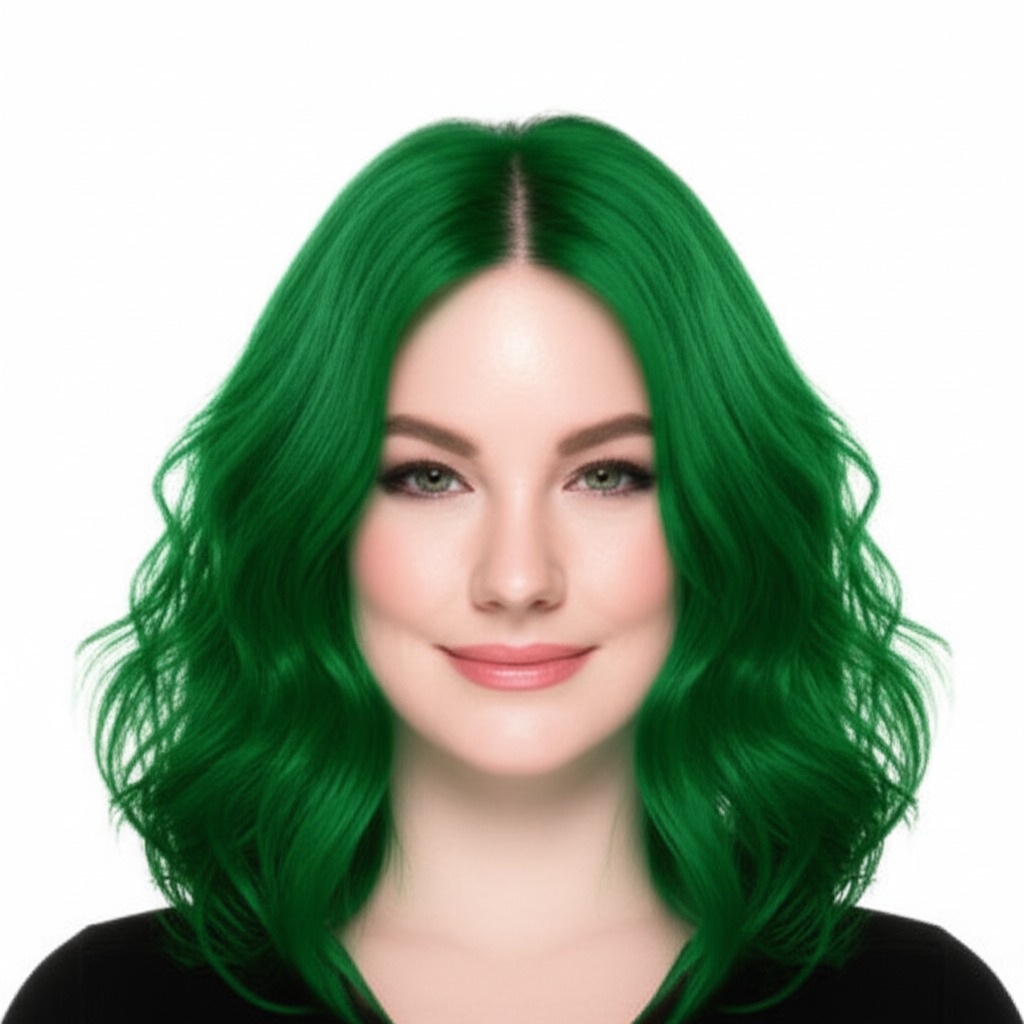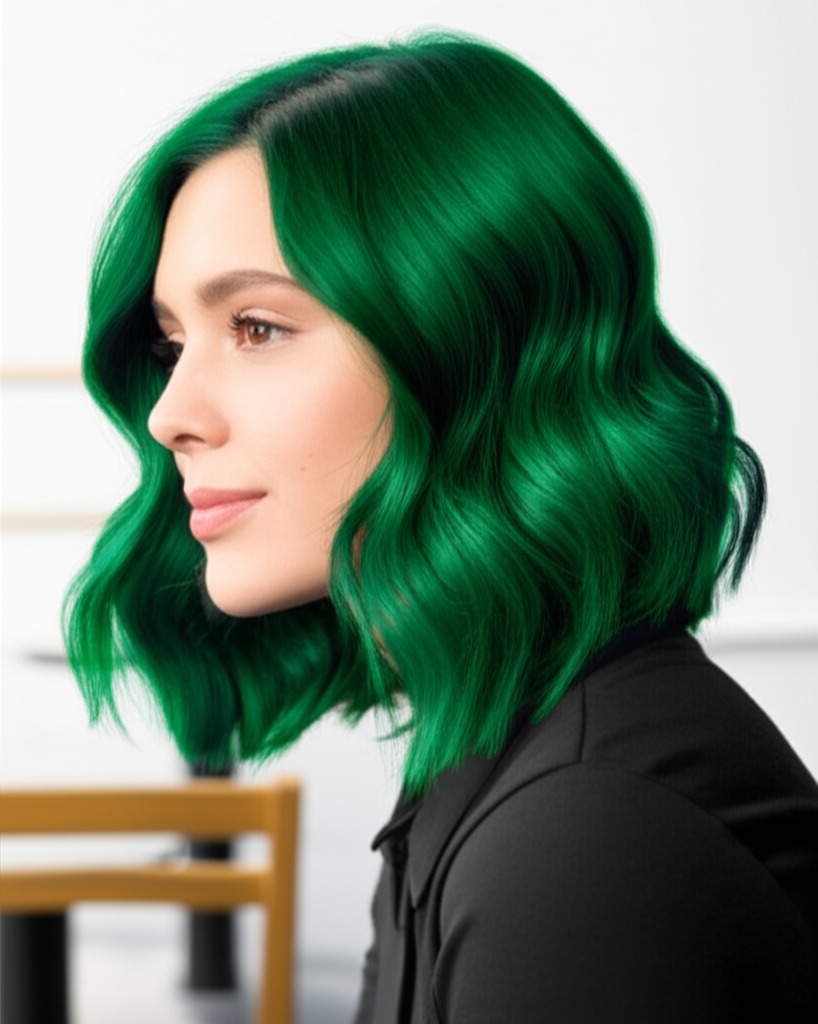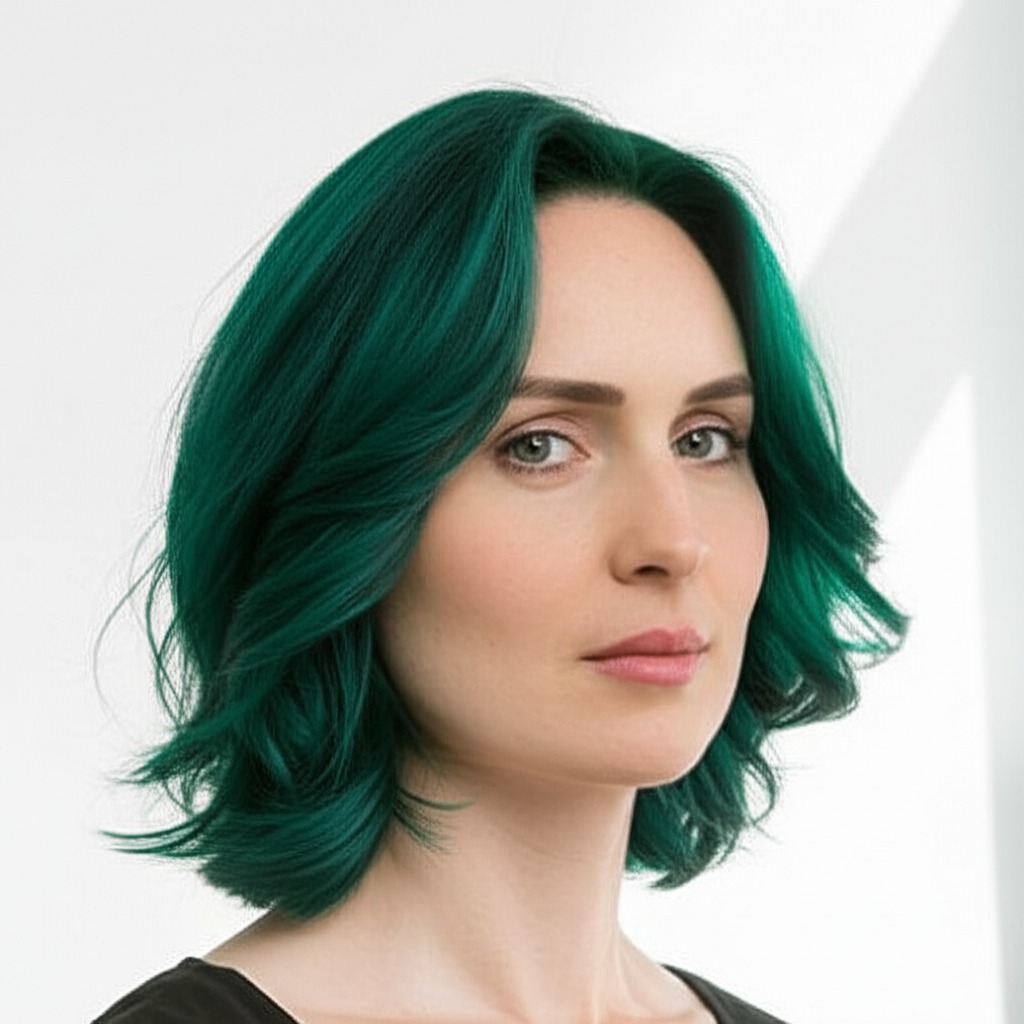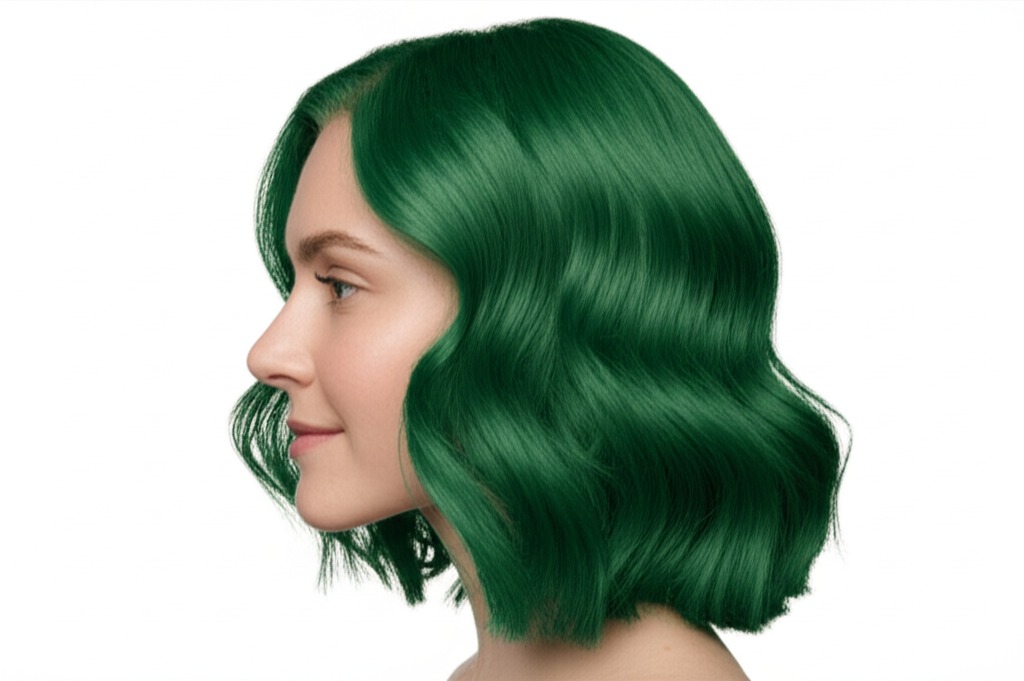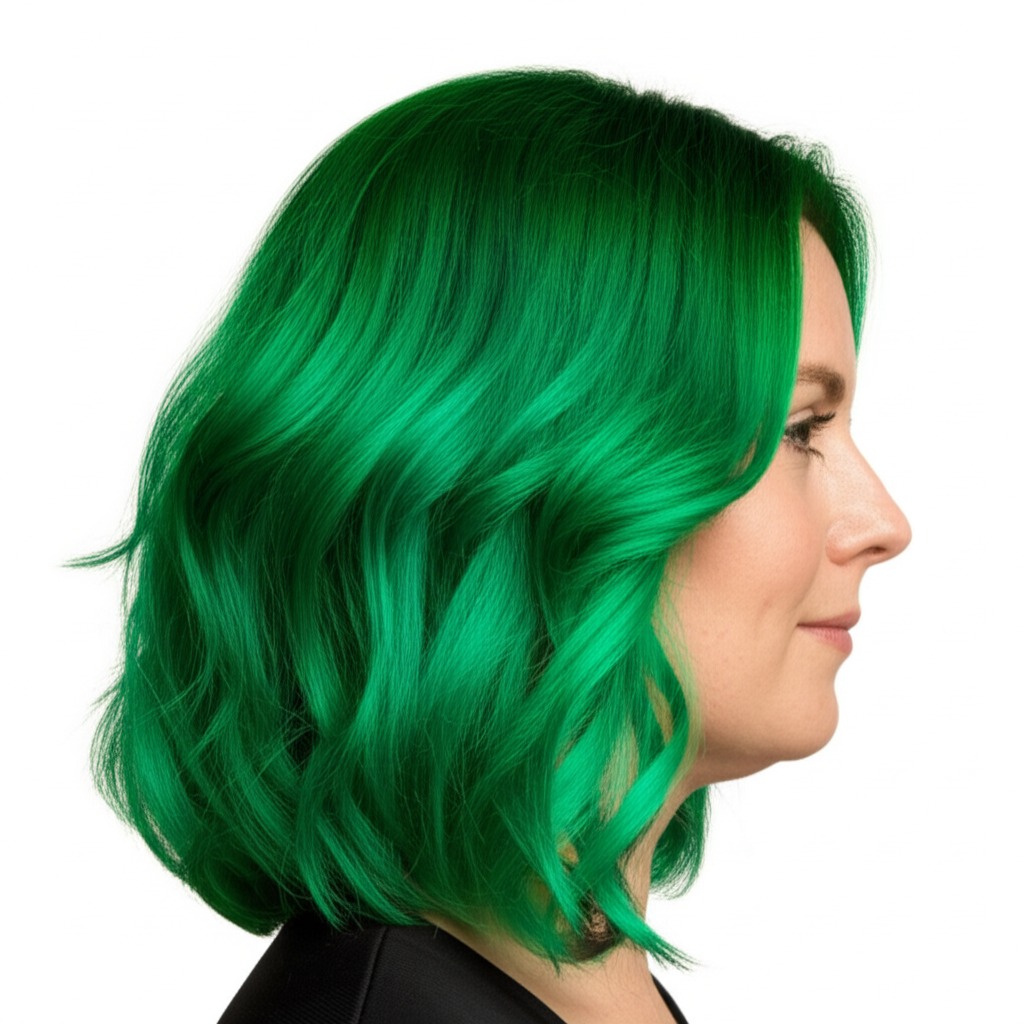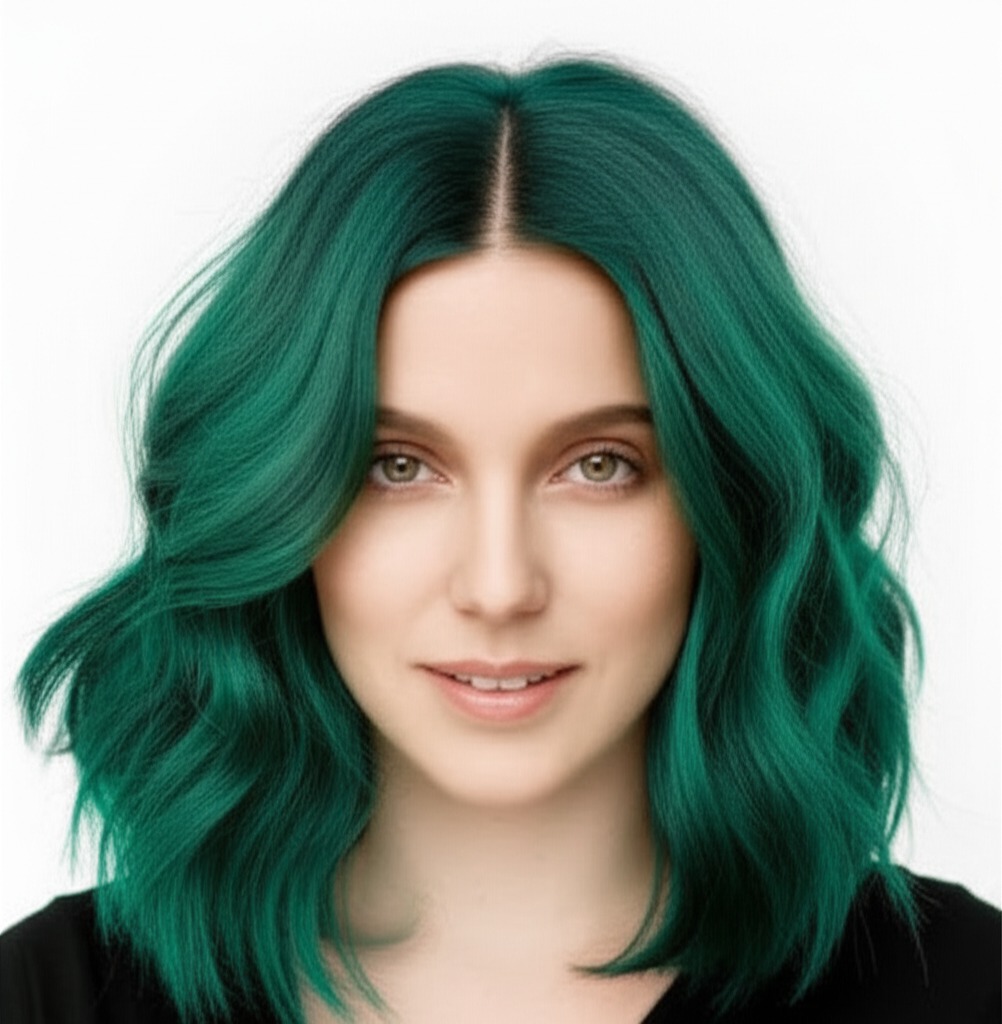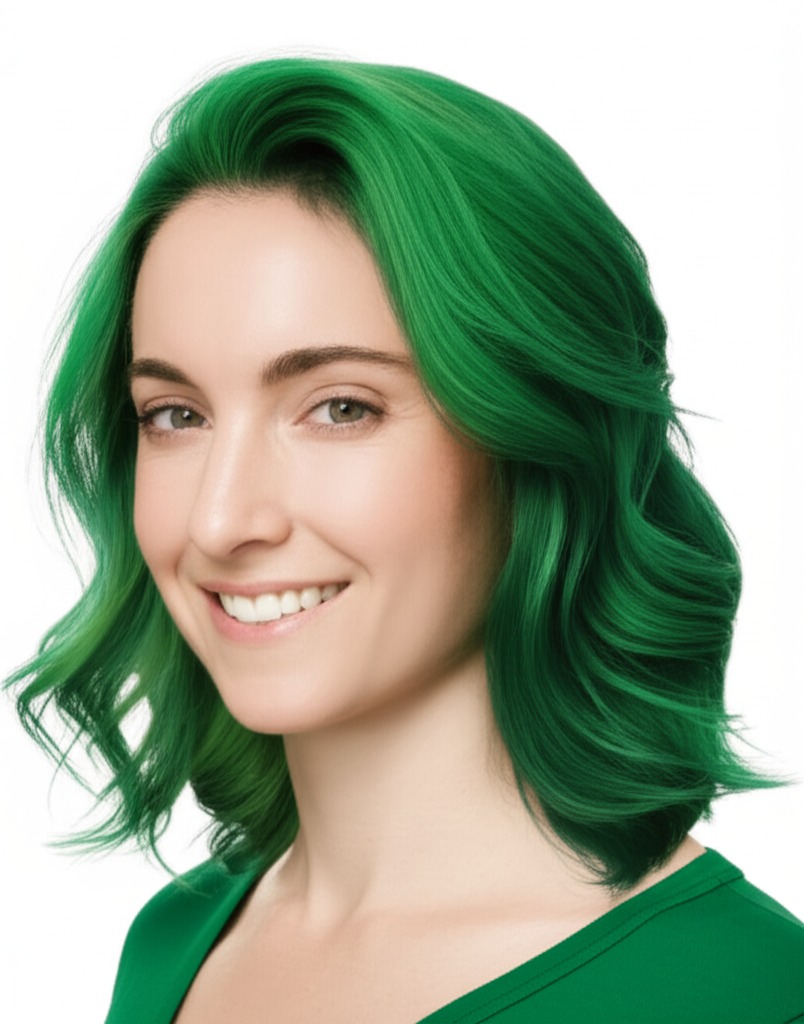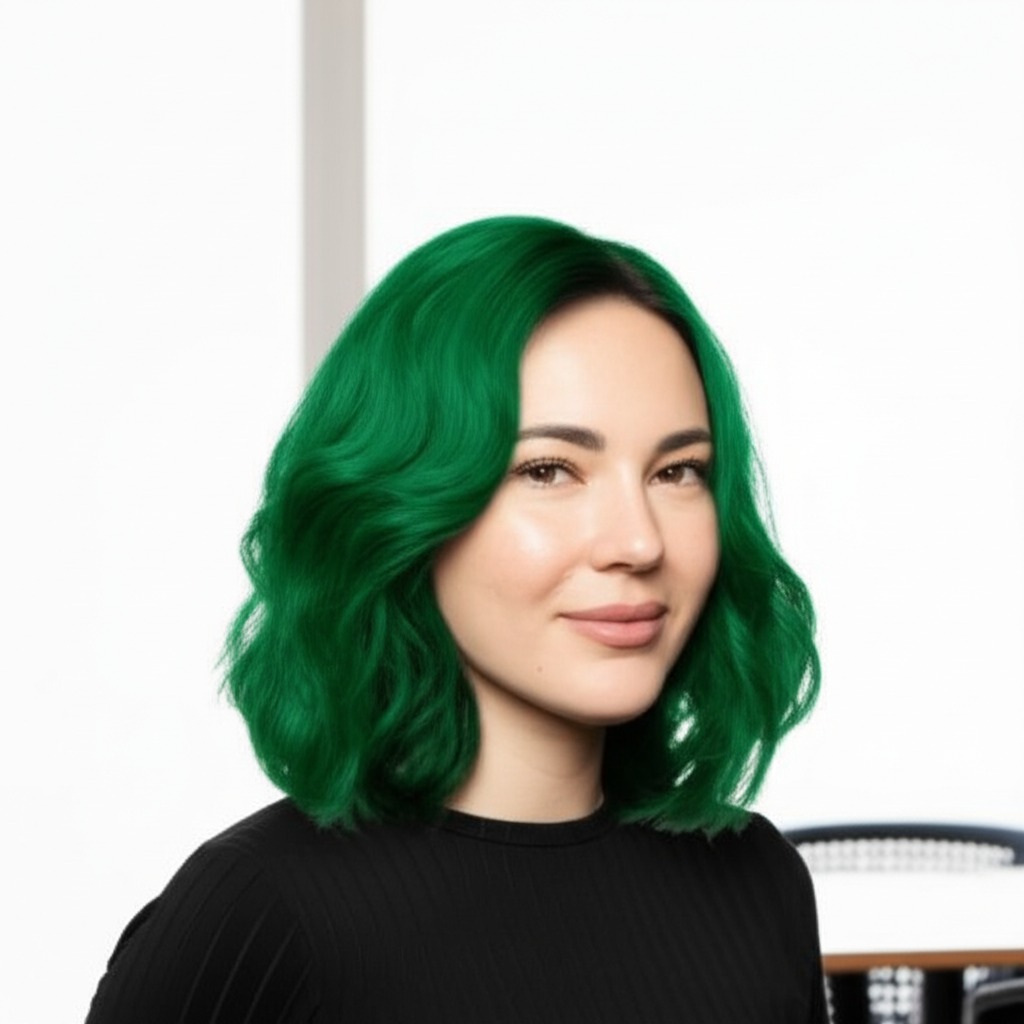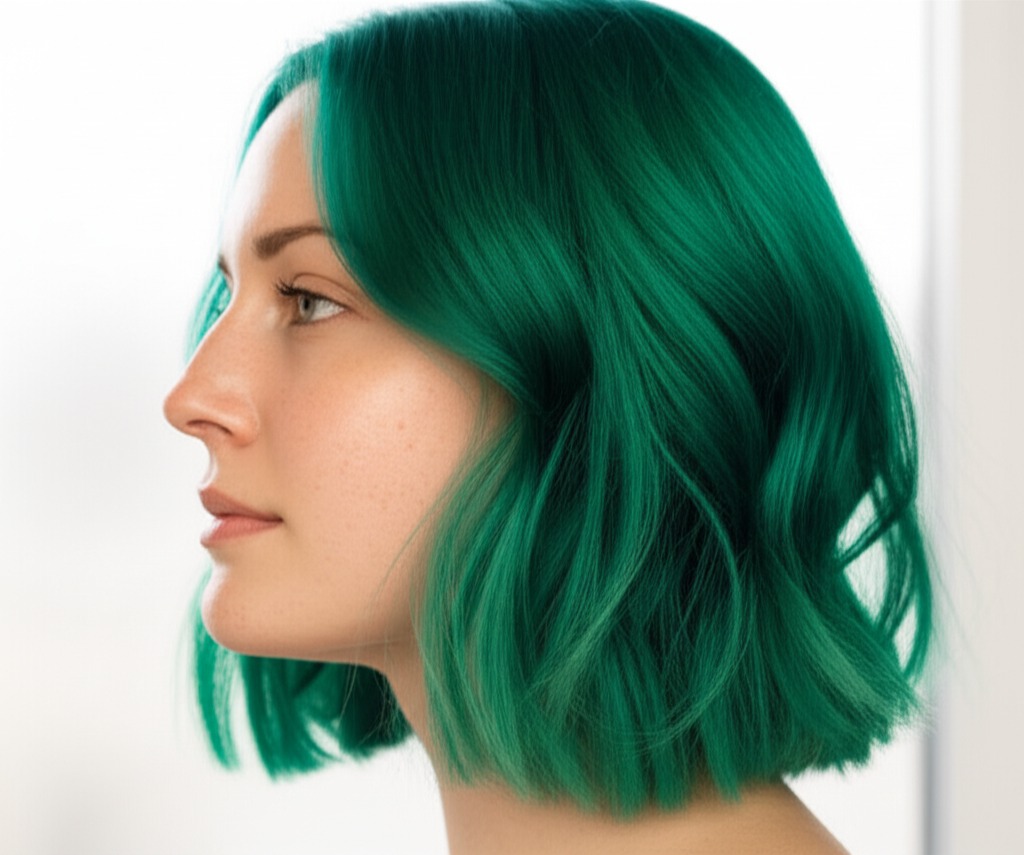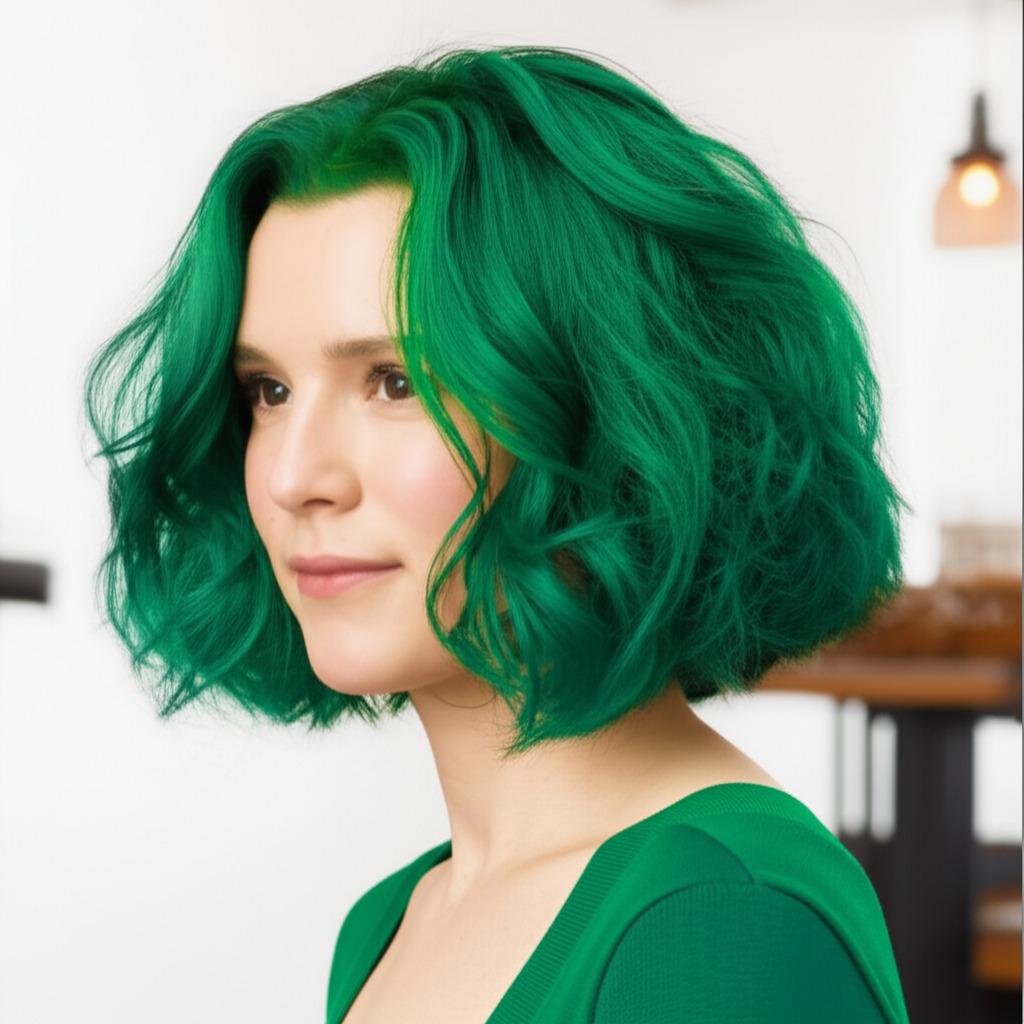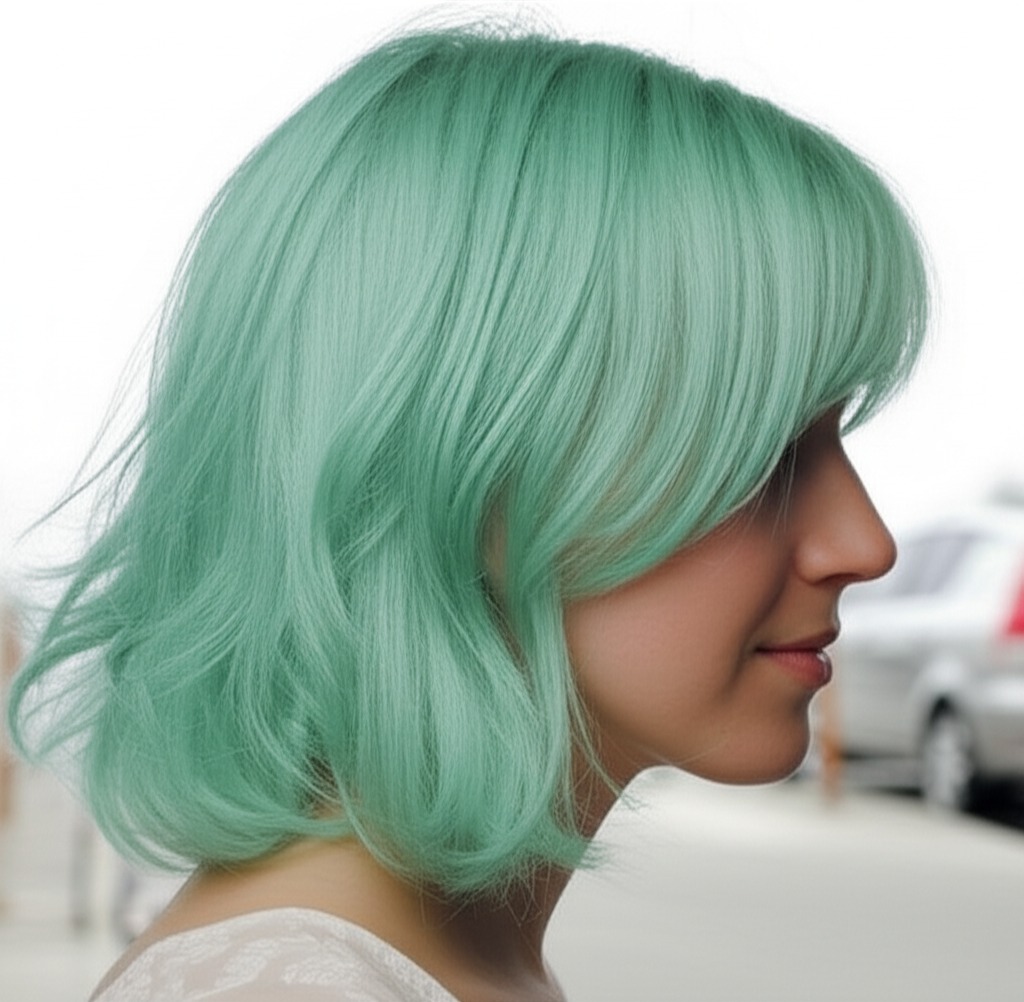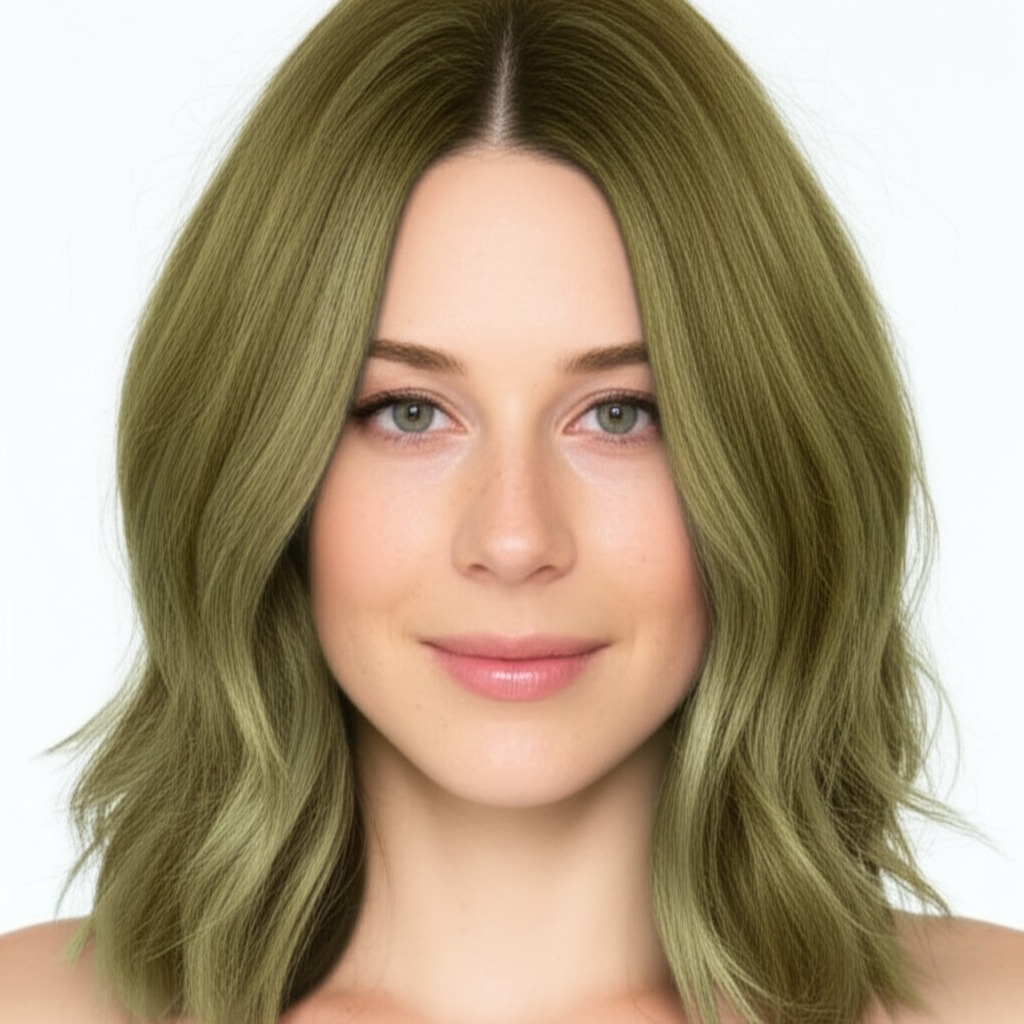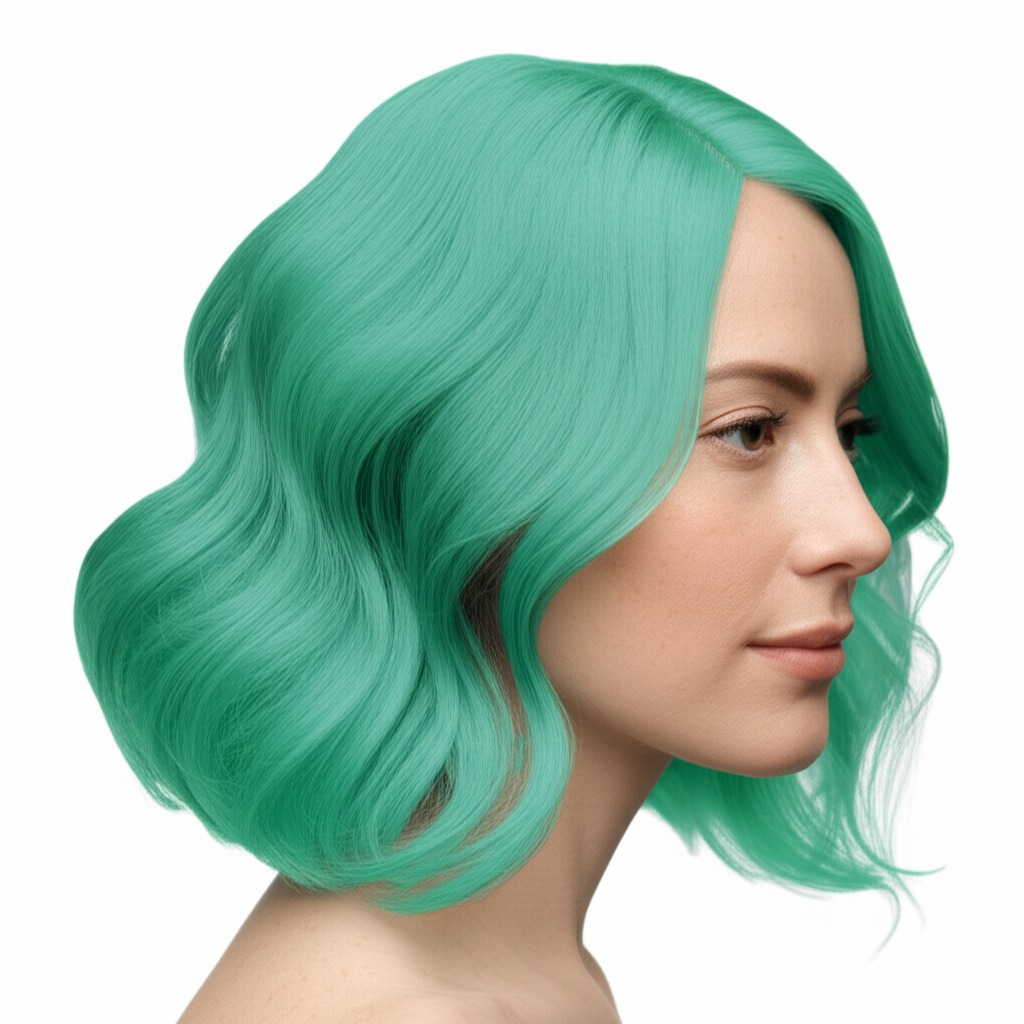#Dive into the Deep Woods: A Guide to Forest Green Hair Color
Forest green – it’s a statement! This isn't your basic blonde or brunette; it evokes nature, mystery, and a touch of bohemian spirit. But achieving gorgeous forest green hair requires understanding its nuances and how to make it work for you. Let's break down everything you need to know.
#1. Understanding the Shade: Defining Forest Green
Forest green isn’t just one color; it’s a family! It sits within the cool-toned spectrum, leaning towards deep emerald or mossy hues – think of the heart of an ancient forest.
- Undertone: Cool. This is crucial. Warm greens (more yellow undertones) can look muddy on many skin tones and hair types.
- Depth/Levels: Forest green typically works best at deeper levels, generally between level 3-6 on the color scale (1 being black, 10 being lightest blonde). The darker the base, the richer and more impactful the forest green will appear. Lighter bases require significant pre-pigmentation to achieve a true forest green without brassiness.
- Variations: You’ll see variations: some are more muted and earthy (think moss), while others have a brighter emerald vibrancy. The best choice depends on your personal style and starting hair color.
#2. Who Does Forest Green Flatter?
While bold, forest green can be surprisingly flattering when paired correctly! It's about finding the harmony between your skin tone, eye color, and natural hair level.
- Skin Tone & Undertone:
- Cool Skin Tones (pink or blue undertones): This is your sweet spot! Forest green will enhance your complexion beautifully. Think fair porcelain skin with cool pink cheeks, olive skin, or deeper complexions with a cooler cast.
- Neutral Skin Tones: Can often pull it off but requires careful consideration of the specific shade and depth. A slightly more muted forest green is usually best.
- Warm Skin Tones (yellow/golden undertones): Can be tricky! Forest green can clash, making skin look sallow or muddy. If you're warm-toned, consult with a stylist to see if a modified version (perhaps incorporating some cooler browns) could work.
- Eye Colors: Forest green really pops against:
- Green Eyes: A match made in heaven! It intensifies the natural color and creates a captivating look.
- Blue/Gray Eyes: The contrast is stunning, making your eyes appear even brighter.
- Brown Eyes: Can work well, especially if you have cooler brown eyes with hints of green or gray.
- Natural Level Starting Points: Ideally, you'll want to start at a level 3-6 for the most vibrant result. If you’re darker (level 1-2), significant lightening will be needed, which can impact hair health. Lighter starting points (levels 7+) require careful color depositing and may not achieve the desired depth of forest green without compromising integrity.
#3. Technique Options: Choosing Your Application Method
How your stylist applies the color dramatically impacts the final result.
- Single-Process: A solid, all-over application. Best for those wanting a bold, uniform look and starting with a relatively dark base (levels 3-6).
- Highlights/Lowlights: Adding pops of forest green through highlights or lowlights creates dimension and visual interest. Good for adding subtle color without a full commitment.
- Babylights: Very fine, delicate highlights that mimic the look of naturally sun-kissed hair with hints of green. A softer approach.
- Gloss/Toner: Used after lightening or as a refresh to deepen and refine the forest green shade, adding shine and correcting any unwanted tones.
- Balayage-Effect: Hand-painted sections create a blended, natural look that grows out more seamlessly. Offers a softer transition than traditional highlights and is great for low maintenance.
- Solid vs. Dimensional: Solid provides an even color; dimensional techniques like balayage or babylights add depth and movement.
#4. Maintenance & Longevity: Planning Ahead
Forest green, being a direct dye, fades faster than permanent colors. Realistic expectations are key!
- Wash Frequency: Minimize washing (2-3 times per week max). Every wash contributes to fading.
- Toner Refresh: Expect to refresh the color every 4-8 weeks depending on hair porosity and water quality. Toners help maintain vibrancy and correct any brassiness that develops.
- Root Growth Pacing: Roots will be noticeable as they grow out, especially with a single process application. Discuss how you want your roots to look (contrasting or blended) with your stylist.
- Budget/Time Planning: This color is not budget-friendly! Lightening often required means higher salon costs. Expect multiple appointments and ongoing toner upkeep. Time commitment will be significant, particularly for initial application and subsequent refreshes.
#5. Seasonality & Pairing with Cuts: Style Considerations
Forest green’s versatility shines in different cuts and seasons.
- Cuts:
- Bob/Lob: A sharp bob or lob showcases the color's boldness beautifully.
- Long Layers: Creates movement and dimension, allowing the green to catch the light.
- Pixie Cut: Can work with a more muted forest green for an edgy but sophisticated look.
- Seasonal Tweaks: In winter, deeper, richer tones are stunning. For summer, consider adding subtle golden highlights (with caution—potential brassiness!) or lighter babylights to brighten the overall effect.
- Event/Occasion Picks:
- Work: A more muted and blended balayage-effect is generally safer for professional settings.
- Daytime: A vibrant, all-over color can be fun and expressive!
- Evening: Let the forest green shine with a sleek style or textured waves.
- Weddings: A stunning choice – consider incorporating subtle shimmer or highlights to catch the light beautifully.
#6. At-Home Care: Protecting Your Investment
Proper care is essential for preserving your color's vibrancy and health.
- Sulfate-Free Shampoo & Conditioner: Sulfates strip color, so switch to gentle, sulfate-free products specifically designed for colored hair.
- Clarifying Cadence: While sulfates are a no-no, occasional clarifying shampoos (every 4-6 weeks) can remove buildup without excessive stripping.
- Heat Protection: Always use heat protectant spray before styling with hot tools!
- Color-Safe Styling Tips: Avoid harsh chemicals and excessive sun exposure. Rinse hair with cool water to seal the cuticle and lock in color. Consider a UV protective leave-in treatment.
- Product Checklist: Sulfate-free shampoo, conditioner, heat protectant spray, deep conditioning mask (for colored hair), color depositing gloss/mask (to refresh vibrancy).
#7. Common Pitfalls & How to Avoid Them
Let's tackle potential problems before they arise!
- Brassiness: The biggest concern with forest green on lighter bases. Proper pre-pigmentation and regular toning are essential.
- Banding: Uneven color application, often due to improper lightening or uneven product saturation. Requires a skilled stylist and careful sectioning.
- Patchiness: Can occur if the hair isn’t evenly saturated with color, especially on darker bases. Pre-lightening is key for even distribution.
#8. Pros & Cons: Weighing Your Options
Before taking the plunge, consider these points.
- Pros: Unique and eye-catching; can be surprisingly flattering; versatile styling options.
- Cons: High maintenance (frequent toning); fades quickly; expensive to maintain; potential for brassiness or unevenness if not done correctly.
#9. Salon Consultation Script: Setting Expectations
Here are some questions your stylist might ask, and prompts you should be prepared to discuss:
- "What is your current hair color level?"
- “Have you lightened your hair before? If so, how recently?”
- "Are there any areas of gray coverage needed?"
- "How much time/budget are you realistically willing to commit to maintenance?"
- "Can you show me some inspiration photos of the exact shade and application style you desire?"
- “Let’s discuss your skin tone and undertones. Are you comfortable with a color consultation?”
#10. FAQs: Your Burning Questions Answered
- Can I do this at home? While possible, it's risky! Achieving the desired depth and avoiding brassiness is difficult without professional expertise.
- Will forest green stain my shower? Yes, direct dyes can sometimes cause temporary staining of surfaces. Rinse thoroughly after application and use a dark-colored towel.
- How long will it take to fade completely? Depending on your hair porosity and care routine, expect 6-12 weeks for significant fading.
- Can I go lighter afterwards? Yes, but the green pigment can affect the final result. A color remover might be needed first.
- What if my hair turns muddy or olive? This usually indicates a warm undertone clash. Adjusting the shade with more cool pigments and strategic toning can help correct it.
- Is forest green damaging to my hair? The lightening process (if required) is the most damaging aspect. Proper care and conditioning are essential for maintaining healthy hair.
Embracing forest green hair is a bold statement—enjoy the journey!
